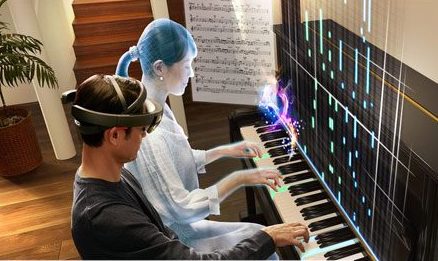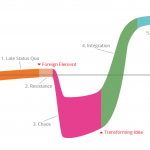“Every challenge and every adversity contains within it the seeds of opportunity and growth” — Roy T Bennett
Digital technologies have transformed several industries across the world; from manufacturing to retail, from financial services to healthcare, from travel & hospitality to transportation. One industry that is still lagging behind is education. While several online platforms such as Coursera, Kadenze, EdX, etc have made access to world class teachers and content ubiquitous. But the pedagogical methods are still deeply rooted in a classroom based education.
Online music tutoring, especially learning to play an instrument is particularly challenging given the physicality of the process. The 360o visual observations and guidance that student requires in order to inculcate the correct techniques and habits is also hard to implement.
Besides, music teachers are also not great adopters of technology and they often view it as a foe instead of a friend! The recent crisis as a result of the Covid-19 virus however has disrupted education all over the world. Be it schools or colleges, online or traditional, big cities or in rural towns, education as we know it has come to a virtual standstill. While teachers in traditional schools have managed to find their feet online, music educators have been among the hardest hit. The main challenges faced by them in online music tutoring are:

In this blog we will share 4 proven and effective best practices that will address these challenges and help create a high quality learning experience online that gets close to an in-person/classroom session.
BEST PRACTICE 1: FLIP LEARNING
Traditionally the teacher introduces new material to a student during the in-person session. The teacher demonstrates the material, asks the students to play along, makes corrections and then asks the student to practice it the rest of the week.
Using a Flip Learning, the teacher creates a short video (i.e. each 2-3 minutes) of the upcoming lesson. The student watches the video and practices it to their best abilities. The online session will be used primarily to enhance the students playing. Poor connectivity can still pose a challenge but this can be mitigated by embracing the third best practice.
BEST PRACTICE 2: LET TECHNOLOGY DO THE HEAVY-LIFTING
From creating personalized content to scheduling classes ; or making sure students are practicing to knowing where the students are having difficulties; from promoting classes to getting paid on time; or publishing videos to live streaming: there are a plethora of technology tools now at the disposal of the teacher. Don’t be overwhelmed! With just 3-4 tools a teacher can focus on the students instead of the technology. The teacher can confidently pick from the list below and go about with their sessions:
- Equipment: 2 Camera Set up- best for students to be able to see close up of teachers hands and fingers. One is webcam and the other can be smart phone on a mini-tripod for close-up.
- Video conferencing: Zoom, Skype, or Google Hangout
- Videos: Youtube, Vimeo or In-app (like in Manoke)
- Personalized Lessons, orchestral play along, real-time analytics: Manoké, SmartMusic or Noteflight
- (Optional) Ensemble playing: JamKazam, JackTrip (may require a techie to help setup!) support live ensemble playing albeit with latency. Alternatively the teacher can select a piece, set the key, time signature, tempo, phrasing and length of song on which the students can record and share. The teacher can then make a video collage using apps such as Kinemaster or Adobe Premiere and let it trend!!
BEST PRACTICE 3: RECORD & REUSE
It is going to take some time and a lot of sessions until a teacher become fully comfortable with the online channel. Until then it is a good idea to record every session. Store them on the local computer or (with proper security controls )on the cloud. The same applies for the students also. It is imperative that students are able to record their practice sessions, listen to them and share with the teachers once they feel it is ready for assessment. The saved recordings also provide an easy way to assess student progress on a quarterly or annual basis.
BEST PRACTICE 4: SIZE MATTERS (WHEN IT COMES TO ONLINE/DIGITAL)
One of the major adjustments for the teachers when it comes to online/digital channel is the size of content (length of lessons, length of videos, length of lectures, etc). The channel is optimized for freshly made, bite-sized content for instant consumption. So teachers need to make sure they are not giving elaborate theory lectures and lengthy demos with a lot of talking. Either live or in their videos. 2 minutes is now considered a long time. So serve your lessons in micro-chunks and you can see how quickly students eat them off!
Following are additional resources that can provide guidance based on experiences of some of the top teachers & trainers in the world.
Additional Resources for online music tutoring:
http://jazzednet.org/resources/teaching-online/
Yes it is a trying time for the entire professional world with Covid-19 and music education is among the hardest hit. But we can convert this challenge and take advantage of the opportunities presented by digital/online music tutoring! Our best wishes to all teachers!






